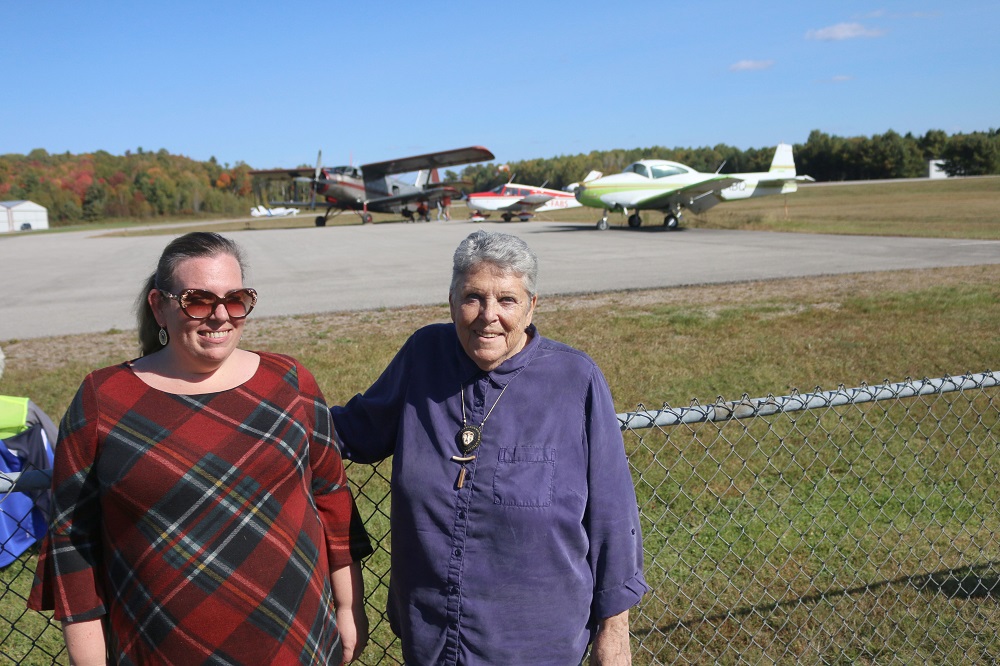Algonquin Highlands mayor Liz Danielsen said discussions about the future development of Stanhope Municipal Airport will be a top priority for council during strategic plan deliberations later this year.
The township has committed to updating a near decade-old land use and development plan for the facility, with a long-term goal of ensuring the airport becomes self-sustaining. It currently runs at an annual operational deficit of approximately $67,000.
Danielsen has long touted the airport as one of Algonquin Highlands’ greatest assets and believes the key to balancing the books is to better promote the space.
“There’s so much more we can do to heighten awareness about the airport and improve how people view it. We need to look at slow, steady progress, increased aviation traffic, hosting more events there,” Danielsen said. “A community hub is something council has always wanted that space to be.”
Most of the township’s other community facilities, such as libraries and recreation halls, also operate at a deficit, the mayor said.
“Unfortunately, the airport is seen as a different kind of animal,” Danielsen said. “Since [our last development plan in 2014], there has been considerable growth and the deficit has been reduced, but with a new plan and some solid marketing of what we have to offer I’m hoping to see some results over the next year.”
The history
The airport came online in 1967, after the township approved the development of a 2,680 ft. grass runway, terminal building, fuel facilities and hangars. In 1989, after receiving funding from the federal and provincial governments, the municipality installed a paved 2,500 ft. runway.
In 2001, the council of the day launched a plan to develop a new 4,000 ft. runway after the airport was identified as one of the strongest opportunities for increased investment in a County of Haliburton economic development marketing plan. Though the township had been approved for a $2 million Build Canada Fund grant to help pay for the new strip, a newly elected council, in 2010, scrapped the project, which had been heavily criticized by the public.
Danielsen was one of the councillors to vote ‘no’ for the new runway. “It just wasn’t proven to be viable,” she said. In July 2013, the Ministry of Natural Resources announced a $12.2 million project for the construction of a 20,000 sq. ft. forestry firefighting headquarters, new hangars, and improved taxiways, strengthening the airport’s financial position. The build was completed in 2016.
More recently, the township has been looking for other ways to generate money at the site and in September 2020, staff tabled a report outlining the cost, around $100,000, to build a new 1,500 square metre access road to service 10 lots council had discussed opening for commercial and industrial opportunities.
In 2021, council committed to updating its plan to ensure the long-term viability of the airport.
Updated focus
Danielsen indicated a new runway will not be immediately considered, though the township has retained the land, and committed to leaving it vacant, for future consideration.
Referencing the 10 developable lots, deputy mayor Jennifer Dailloux said she wants to know there’s a demand from the business sector before the township commits any additional funds.
“If we build it, will they come? Do we know there’s a market for those lots? Or is the fact they’re a little ways away from [Hwy. 35], you can’t get a commercial plane in, or too far from an urban centre a detriment?” Dailloux asked, adding she wants to ensure opening the land directly benefits taxpayers in Algonquin Highlands.
“My worst case scenario would be to develop these lots, put a considerable amount of money in to service them, then a business from Toronto, and another from Minden [benefits]. Do our taxpayers have to pay for that, or should it be more of a County thing?” Dailloux added.
Scott Ovell, the County’s director of economic development, said he would be willing to work with Algonquin Highlands on plans for the airport, but noted he couldn’t make any firm commitments without County council’s approval. He recommended the new plan, which is set to go out for request for proposals in the coming months, include numbers outlining the cost, and return on investment, of any potential project at the airport.
Housing was identified as a major need by coun. Julia Shortreed.
“Say we do develop these lots and businesses come, where will the employees live? Can we have a piece [of the airport property] saved for some kind of housing development?” she wondered. Danielsen suggested there was a parcel, around a couple of acres, on the north side of the property, away from the runway, that could be appropriate for housing.
The mayor believes council needs to take another look at fee structures for hangar rentals, aircraft parking, and runway access to ensure they’re in line with industry standards. The township charges between $42.84 and $83.54 per day for hangar space, with annual lease fees ranging from approximately $2,500 to $10,600. Aircraft parking runs $13.57 per day, $81.40 weekly, $101.50 monthly, and $474.24 yearly. A $564.42 maintenance fee is charged for regular airport runway access.
Coun. Sabrina Richards believes the terminal building is too small, which will be exacerbated by pending accessibility upgrades, due next year. Danielsen agreed.
“The more development that takes place, the more the terminal building needs to be folded into this discussion,” the mayor said.





